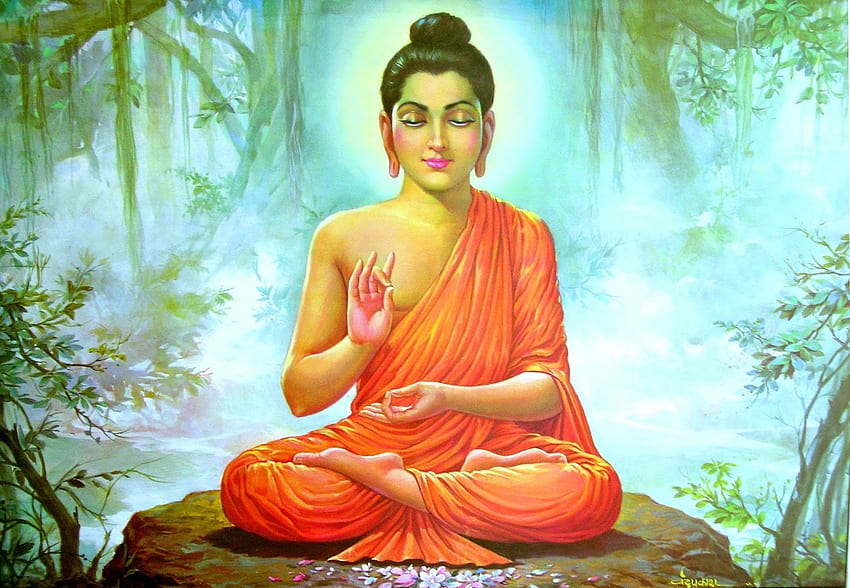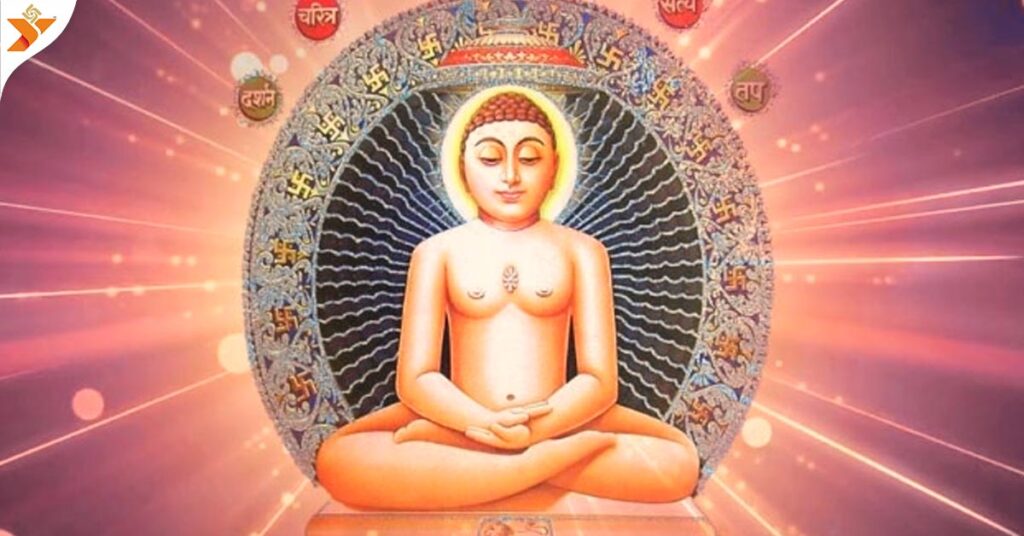In the world of spirituality, few figures have left an impact as profound as Lord Mahavir Jain, the 24th and final Tirthankara of Jainism. His life and teachings continue to inspire millions across the globe, promoting peace, non-violence, and self-discipline. Born into royalty, Lord Mahavir renounced worldly pleasures to pursue a path of enlightenment, forever transforming the spiritual landscape of India. His legacy, rooted in compassion and simplicity, has endured for over 2,500 years, shaping the lives of Jains and non-Jains alike.
The Early Life of Lord Mahavir
Born in 599 BCE in the kingdom of Vaishali (modern-day Bihar, India), Lord Mahavir was named Vardhaman by his royal parents, King Siddhartha and Queen Trishala. From a young age, he displayed a remarkable sense of wisdom and compassion, qualities that would define his later life. Raised amidst wealth and comfort, Vardhaman showed little interest in the luxuries of palace life, instead seeking deeper truths about existence.
At the age of 30, despite the responsibilities of his royal life, Vardhaman made a bold decision. He renounced his kingdom, wealth, and family to seek spiritual liberation. Leaving behind his royal robes, he embarked on a journey of deep meditation and asceticism, forsaking all material comforts.
The Path to Enlightenment
For the next twelve years, Vardhaman practiced extreme penance and meditation. He wandered from place to place, enduring physical hardships, fasting, and practicing silence for long periods. Through this rigorous spiritual journey, he sought to free himself from the cycles of birth, death, and rebirth—known as samsara—and to achieve a state of pure knowledge or kevala jnana.
It was during this period of intense penance that Vardhaman attained enlightenment, earning the title “Mahavir” or “Great Hero” for his extraordinary spiritual courage. At the age of 42, he became a fully realized Tirthankara—a spiritual teacher who has conquered worldly attachments and guides others on the path to liberation.

Mahavir’s Teachings: The Foundations of Jainism
Lord Mahavir’s teachings were radical for their time, advocating principles that went beyond religious boundaries. His core teachings were centered on the Five Great Vows—non-violence (ahimsa), truthfulness (satya), non-stealing (asteya), chastity (brahmacharya), and non-possession (aparigraha).
- Non-violence (Ahimsa): Mahavir’s commitment to non-violence extended beyond humans to all living beings. He believed that all life forms, no matter how small or insignificant, deserved to live peacefully. This concept of ahimsa later influenced many global leaders, including Mahatma Gandhi, and continues to resonate today in movements for animal rights and environmental protection.
- Truthfulness (Satya): Mahavir emphasized the importance of speaking the truth, as falsehood leads to suffering. Living an honest life was not just about words, but also about aligning thoughts and actions with truth.
- Non-Stealing (Asteya): Taking anything that does not belong to you, even in the smallest form, was considered a violation of moral integrity by Lord Mahavir. He encouraged a life of fairness and respect for the property of others.
- Chastity (Brahmacharya): Mahavir taught that controlling one’s desires and passions was essential for spiritual liberation. He encouraged celibacy for monks and a disciplined life for householders.
- Non-Possession (Aparigraha): Perhaps one of his most profound teachings, aparigraha calls for detachment from material possessions and worldly desires. Mahavir believed that attachment leads to suffering, and liberation could only be achieved through letting go of these attachments.
The Two Main Sects of Jainism: Shvetambaras and Digambaras
After Lord Mahavir’s death, Jainism evolved into two major sects—Shvetambara and Digambara—each interpreting his teachings in slightly different ways.
Shvetambara
This sect believes that monks can wear simple white robes and that women are equally capable of achieving liberation. They believe in a more moderate interpretation of Mahavir’s teachings, allowing monks to possess minimal material goods, such as clothes.

Digambara
The Digambaras, however, practice stricter asceticism, with their monks going completely unclothed, symbolizing complete detachment from worldly possessions. They also believe that women must be reborn as men before they can attain liberation, reflecting a more conservative approach.

Despite these differences, both sects revere Mahavir as their ultimate spiritual guide and follow his core principles of non-violence, truth, and self-discipline.
Mahavir’s Legacy: A Timeless Message
Lord Mahavir’s teachings, though ancient, are more relevant than ever in today’s world. His advocacy for non-violence (ahimsa) speaks directly to global conflicts, environmental crises, and personal relationships. In a time when humanity grapples with the consequences of violence—be it in the form of wars, ecological destruction, or societal unrest—Mahavir’s message of compassion and respect for all life is a beacon of hope.
His principles of aparigraha, or non-possession, encourage a sustainable way of living, urging us to reduce materialism and live in harmony with nature. This lesson is crucial in an age of consumerism and environmental degradation.
Mahavir’s call for truth and non-stealing challenges corruption and dishonesty, reminding us that integrity and fairness are the foundations of a just society. His teachings inspire individuals to lead ethical, disciplined lives, rooted in compassion and mindfulness.

Continuing the Legacy Today
The legacy of Lord Mahavir is alive and thriving in the modern world. Jain communities across the globe continue to uphold his teachings, living lives of non-violence, honesty, and compassion. Jain monks and nuns continue to practice the rigorous discipline of asceticism, renouncing all material possessions to focus solely on spiritual growth.
Jain temples, festivals, and institutions keep Mahavir’s message alive. Mahavir Jayanti, celebrated annually to commemorate his birth, is a significant event that brings Jains together to reflect on his life and teachings.
Beyond Jain communities, Mahavir’s message has transcended religious boundaries, inspiring movements for animal rights, vegetarianism, environmentalism, and social justice. His influence can be seen in the non-violent resistance movements led by figures like Mahatma Gandhi and Martin Luther King Jr., both of whom admired the principle of ahimsa.
Finally
Lord Mahavir Jain’s life was a journey of unparalleled courage, sacrifice, and wisdom. From the riches of royalty to the austerity of asceticism, his quest for truth and liberation transformed not only his life but the lives of millions who followed him. His timeless principles of non-violence, truth, and simplicity continue to resonate in our world today, offering a path to peace, sustainability, and spiritual growth.
The legacy of Lord Mahavir is not just a part of history—it is a living, breathing force that continues to inspire humanity to strive for a better, more compassionate world. Let us take a page from his life and walk the path of righteousness, non-violence, and humility, ensuring that his legacy lives on for generations to come.


